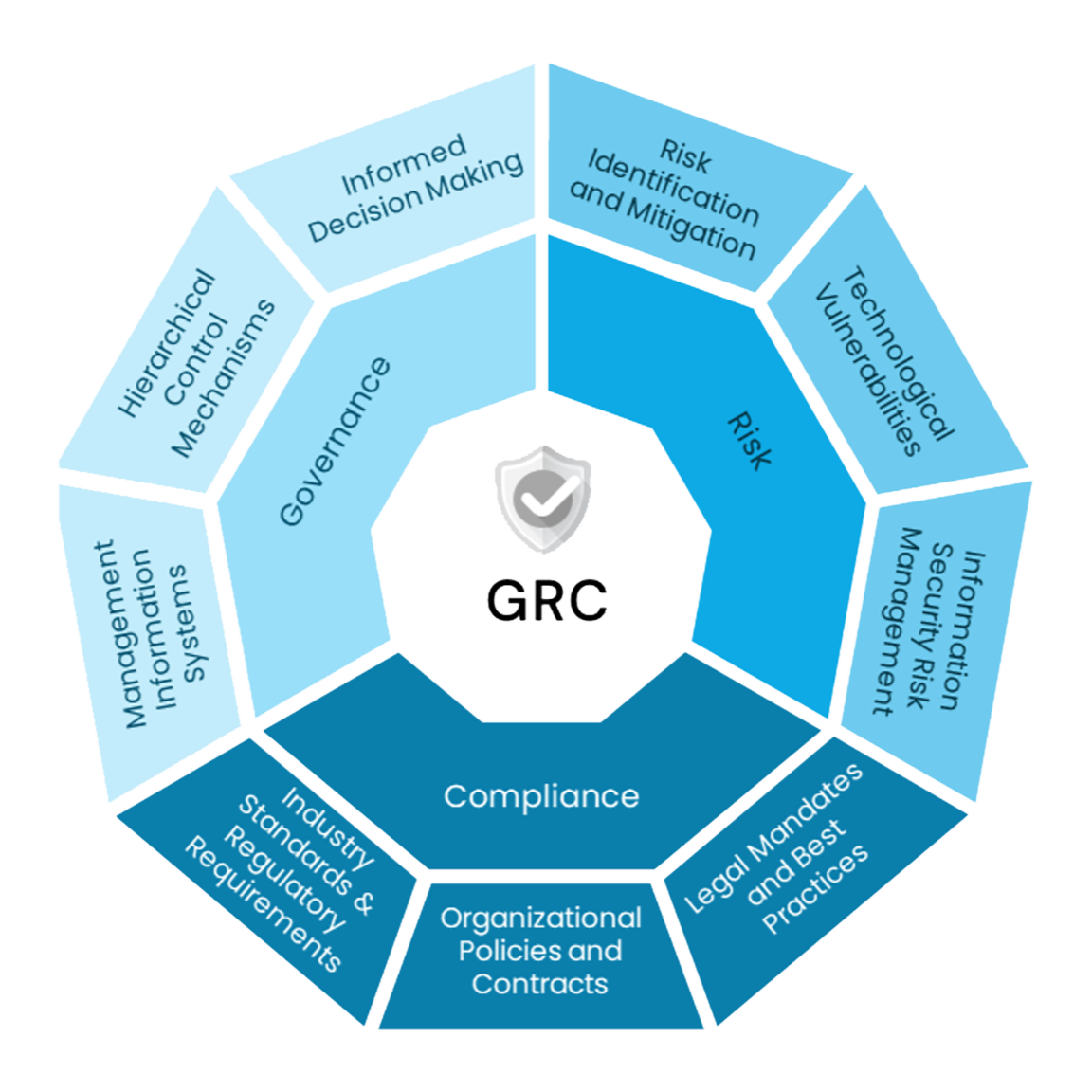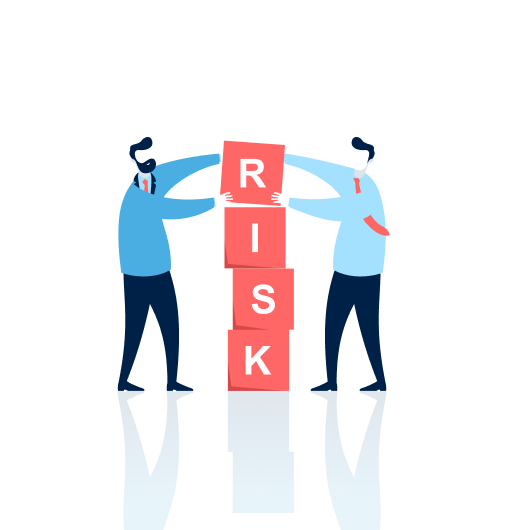Contact us
- Home
- Solutions
Managed Security Services
Industry Focus
- Company
Cybersecurity for a digital world
- Case studies
- Resources
Protect sensitive information by verifying compliance measures that safeguard data integrity and confidentiality.


Governance refers to the system of processes, practices, and structures by which an organization is directed and controlled. It involves defining the roles and responsibilities of key stakeholders, establishing decision-making frameworks, and ensuring accountability and transparency. Governance provides the foundation for effective management and oversight, enabling organizations to achieve their objectives while addressing the interests of various stakeholders. Key aspects of governance include:

Risk management involves identifying, assessing, prioritizing, and mitigating risks that could impact an organization’s ability to achieve its objectives. It is an integral part of effective decision-making and strategic planning, helping organizations anticipate and respond to threats and opportunities. Key aspects of risk management include:

Compliance refers to the adherence to laws, regulations, standards, and internal policies that govern an organization’s operations. It involves understanding the regulatory environment in which the organization operates and implementing processes to ensure compliance with applicable requirements. Key aspects of compliance include:



Governance refers to the system of processes, practices, and structures by which an organization is directed and controlled. It involves defining the roles and responsibilities of key stakeholders, establishing decision-making frameworks, and ensuring accountability and transparency. Governance provides the foundation for effective management and oversight, enabling organizations to achieve their objectives while addressing the interests of various stakeholders. Key aspects of governance include:

Governance refers to the system of processes, practices, and structures by which an organization is directed and controlled. It involves defining the roles and responsibilities of key stakeholders, establishing decision-making frameworks, and ensuring accountability and transparency. Governance provides the foundation for effective management and oversight, enabling organizations to achieve their objectives while addressing the interests of various stakeholders. Key aspects of governance include:

Risk management involves identifying, assessing, prioritizing, and mitigating risks that could impact an organization’s ability to achieve its objectives. It is an integral part of effective decision-making and strategic planning, helping organizations anticipate and respond to threats and opportunities. Key aspects of risk management include:
Risk management involves identifying, assessing, prioritizing, and mitigating risks that could impact an organization’s ability to achieve its objectives. It is an integral part of effective decision-making and strategic planning, helping organizations anticipate and respond to threats and opportunities. Key aspects of risk management include:


Compliance refers to the adherence to laws, regulations, standards, and internal policies that govern an organization’s operations. It involves understanding the regulatory environment in which the organization operates and implementing processes to ensure compliance with applicable requirements. Key aspects of compliance include:

Compliance refers to the adherence to laws, regulations, standards, and internal policies that govern an organization’s operations. It involves understanding the regulatory environment in which the organization operates and implementing processes to ensure compliance with applicable requirements. Key aspects of compliance include:



Our Information Auditing services ensure the integrity , confidentiality , and availability of your critical data – providing you with the assurance that your information assets are secure and well – managed
Overall, our Information Auditing services offer peace of mind, knowing that your critical data is in safe hands. With a focus on integrity, confidentiality, availability, and assurance, we ensure that your information assets remain resilient, reliable, and secure in today’s dynamic and evolving threat landscape.

Our Information Auditing services ensure the integrity , confidentiality , and availability of your critical data – providing you with the assurance that your information assets are secure and well – managed
Overall, our Information Auditing services offer peace of mind, knowing that your critical data is in safe hands. With a focus on integrity, confidentiality, availability, and assurance, we ensure that your information assets remain resilient, reliable, and secure in today’s dynamic and evolving threat landscape.
We’re happy to answer any questions you may have and help you determine how our services best fit your needs.
Email Us : info@cycops.co.in
We Schedule a call at your convenience
We do a discovery and consulting meting
We prepare a proposal